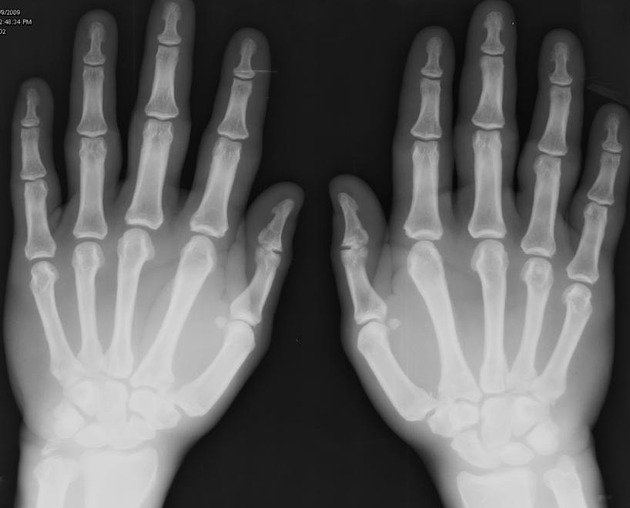Acromegaly
content of this page
1- Introduction
2- Physiological Overview
3- Symptoms
4- Treatment
Introduction
Acromegaly is a rare hormonal disorder that occurs when the pituitary gland produces excessive growth hormone (GH) after the growth plates have closed during adulthood. This results in the gradual enlargement of bones and tissues throughout the body, particularly in the hands, feet, and face. The condition can lead to various health problems if left untreated.

Physiological Overview
Acromegaly is a chronic condition caused by the overproduction of growth hormone (GH) from the pituitary gland, typically due to a benign tumor called a pituitary adenoma. This excess GH stimulates the production of insulin-like growth factor 1 (IGF-1) in the liver and other tissues, leading to abnormal growth and proliferation of cells throughout the body. Physiologically, acromegaly primarily affects the bones, soft tissues, and organs. The most noticeable changes occur gradually over years, with characteristic symptoms such as enlarged hands and feet, facial features becoming coarser (such as a protruding jaw and enlarged nose), and thickened skin. Internally, organs like the heart, liver, and kidneys may also enlarge, which can lead to cardiovascular complications and other health issues if not managed effectively. Beyond physical changes, individuals with acromegaly may experience metabolic disturbances, joint pain, sleep apnea, and in some cases, neurological symptoms due to compression of surrounding tissues by the pituitary tumor.

Symptoms
Enlarged hands and feet: This is often one of the earliest and most noticeable signs, with individuals needing larger glove and shoe sizes.
Facial changes: Features may become more pronounced and coarse over time, including a protruding jaw (prognathism), enlarged nose, thickened lips, and increased spacing between teeth.
Soft tissue swelling: Other soft tissues such as the tongue, lips, and gums may enlarge.
Joint pain: Enlargement of bones and tissues can lead to joint stiffness, pain, and osteoarthritis.
Thickened, oily skin: The skin may become thicker and more oily, with prominent sweating.
Carpal tunnel syndrome: Compression of nerves in the wrist due to tissue enlargement can cause numbness, tingling, and weakness in the hands.
Changes in vision: Pressure from an enlarging pituitary tumor can affect the optic nerves, causing visual disturbances or even loss of peripheral vision.
Sleep apnea: Soft tissue enlargement in the throat can contribute to obstructive sleep apnea, characterized by interrupted breathing during sleep.
Headaches: Tumor growth and pressure on surrounding tissues can cause chronic headaches.
Increased sweating: Excessive perspiration, particularly at night, is common.
Fatigue and weakness: Despite the excess growth hormone, individuals may feel tired and weak due to metabolic imbalances.
Menstrual irregularities: Women may experience irregular menstrual periods or infertility due to hormonal disruptions.
Treatment
Surgery: Surgical removal of the pituitary tumor (transsphenoidal surgery) is often the first-line treatment if the tumor is accessible and the individual is in good health. Successful surgery can lead to rapid normalization of GH and IGF-1 levels. In some cases, additional treatment may be needed if the tumor cannot be completely removed.
Medications:
- Somatostatin analogs (SSAs): Drugs like octreotide and lanreotide can reduce GH secretion and lower IGF-1 levels. These are typically used if surgery is not fully successful or as a pre-operative treatment to shrink the tumor.
- Dopamine agonists: Drugs like cabergoline can sometimes be used to lower GH levels, particularly in cases where the tumor also secretes prolactin.
- Growth hormone receptor antagonists: Pegvisomant is an injectable medication that blocks the action of GH and lowers IGF-1 levels. It is used in cases where other treatments are not effective.
Radiation therapy: This may be considered if the tumor persists or recurs after surgery and is not responsive to medications. Radiation therapy aims to shrink or destroy the tumor cells over time.
Monitoring and management: Regular follow-up with healthcare providers is essential to monitor hormone levels, assess tumor growth, and manage any ongoing symptoms or complications. This may involve adjustments to medications or additional treatments as needed.
Lifestyle considerations: Managing symptoms such as joint pain, sleep apnea, and cardiovascular risks through lifestyle changes, physical therapy, and appropriate medical interventions can help improve quality of life.